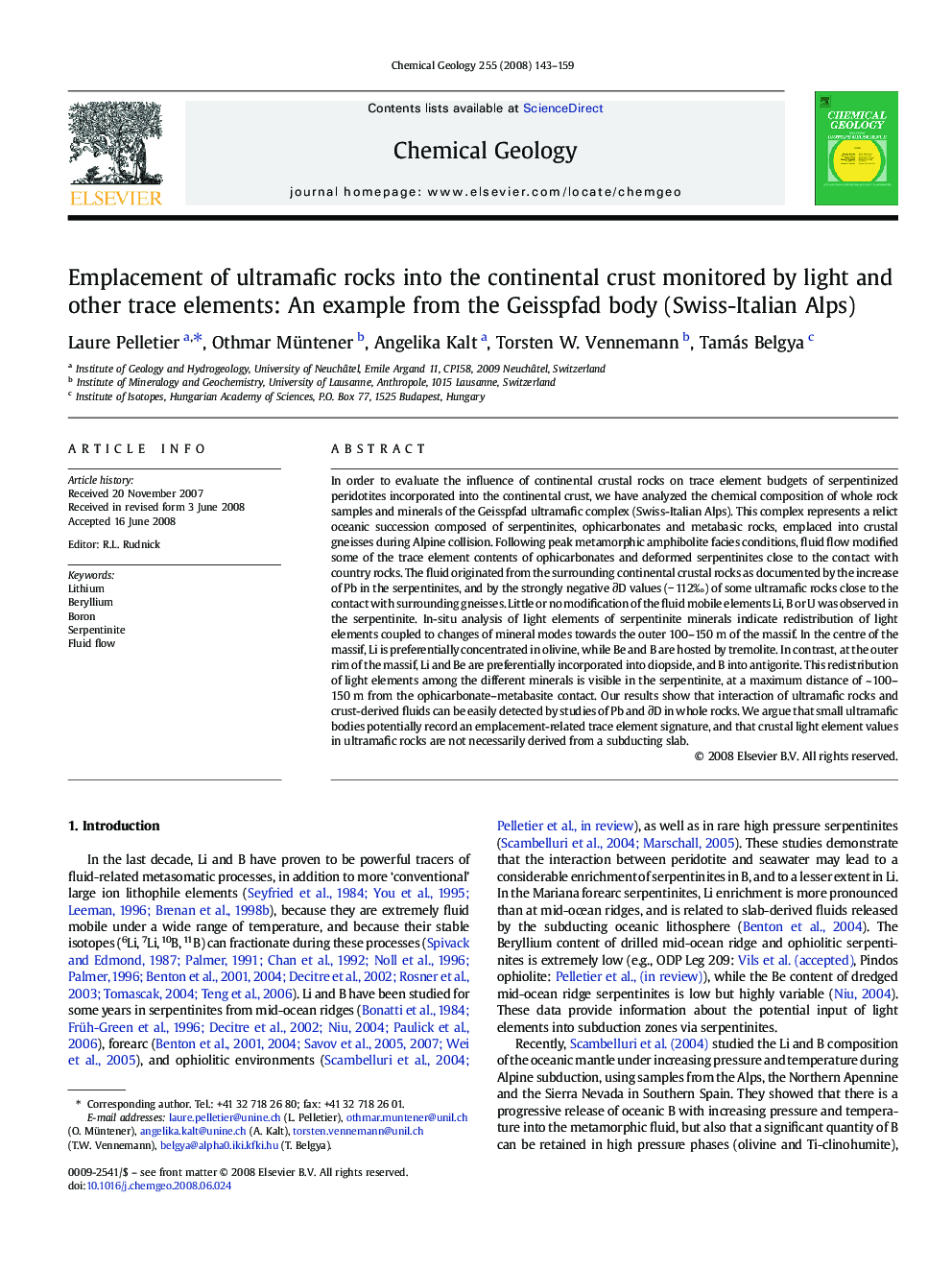| کد مقاله | کد نشریه | سال انتشار | مقاله انگلیسی | نسخه تمام متن |
|---|---|---|---|---|
| 4700675 | 1637722 | 2008 | 17 صفحه PDF | دانلود رایگان |

In order to evaluate the influence of continental crustal rocks on trace element budgets of serpentinized peridotites incorporated into the continental crust, we have analyzed the chemical composition of whole rock samples and minerals of the Geisspfad ultramafic complex (Swiss-Italian Alps). This complex represents a relict oceanic succession composed of serpentinites, ophicarbonates and metabasic rocks, emplaced into crustal gneisses during Alpine collision. Following peak metamorphic amphibolite facies conditions, fluid flow modified some of the trace element contents of ophicarbonates and deformed serpentinites close to the contact with country rocks. The fluid originated from the surrounding continental crustal rocks as documented by the increase of Pb in the serpentinites, and by the strongly negative ∂D values (− 112‰) of some ultramafic rocks close to the contact with surrounding gneisses. Little or no modification of the fluid mobile elements Li, B or U was observed in the serpentinite. In-situ analysis of light elements of serpentinite minerals indicate redistribution of light elements coupled to changes of mineral modes towards the outer 100–150 m of the massif. In the centre of the massif, Li is preferentially concentrated in olivine, while Be and B are hosted by tremolite. In contrast, at the outer rim of the massif, Li and Be are preferentially incorporated into diopside, and B into antigorite. This redistribution of light elements among the different minerals is visible in the serpentinite, at a maximum distance of ~ 100–150 m from the ophicarbonate–metabasite contact. Our results show that interaction of ultramafic rocks and crust-derived fluids can be easily detected by studies of Pb and ∂D in whole rocks. We argue that small ultramafic bodies potentially record an emplacement-related trace element signature, and that crustal light element values in ultramafic rocks are not necessarily derived from a subducting slab.
Journal: Chemical Geology - Volume 255, Issues 1–2, 30 September 2008, Pages 143–159